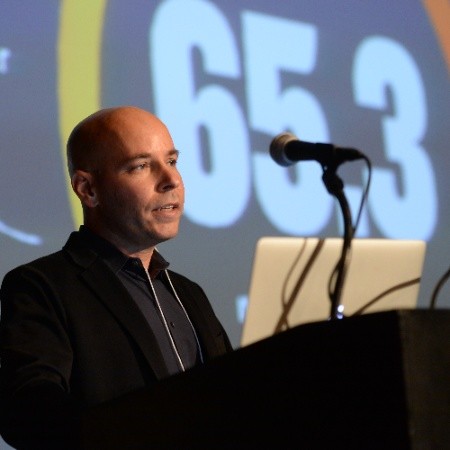One of the issues that is receiving greater attention in the green space is CSR communications. For many companies, this concept has been synonymous with releasing a CSR report, but the problem is that CSR report is mostly just an annual event that doesn’t transform into an ongoing communication, not to mention the fact that not too many people really read it.
Some companies try to make their report more interactive or find other ways to extend its reach, while others look to develop communication tools that are separated from the report. The latest example for the latter is Avon, who just started a new CR blog with the inevitable name, Avon’s Calling.
New content will be posted on the blog every Tuesday, covering ideas, news and perspectives relevant to Avon’s three mission areas – empowering women, sustainability and philanthropy. “We are proud to launch Avon’s Calling as the latest outreach in our goal to be transparent and to offer a dialogue with our many stakeholders,” explained Tod Arbogast, VP of Sustainability & Corporate Responsibility. “Avon has a long heritage as a global change agent, tackling issues as diverse as deforestation and domestic violence, and part of our success is through sharing information and listening to others,” he added. These are great goals, but can Avon meet them?
Avon’s Calling is joining couple of other CSR blogs, like CSR@Intel, Virgin’s People & Planet blog and the Timberland Bootmakers Blog. As I mentioned, there’s a growing thirst for a platform that will enable companies to communicate with their stakeholders on CSR and a blog seems very suitable for this purpose. First, it’s a more controlled environment compared to Twitter, Facebook and other social media channels. Second, it’s rather difficult to say something meaningful when you’re limited to 140 characters on Twitter or a short message on Facebook. Third, a blog is a user-friendly platform enabling stakeholders to easily search for specific CSR issues that interest them.
Still, running a CSR blog is not a ride in the park. Here are three main challenges Avon can expect to face:
Transparency – a CSR blog is an opportunity for a company to demonstrate its transparency, but it's also a challenge. It’s easy to write about the great things the company is doing (and it certainly does), but will the company be willing to write about challenges or somewhat unpleasant issues it is dealing with?
For example, will Avon talk on the blog about PETA’s announcement that Avon (as well as Mary Kay and Estee Lauder) has been conducting tests on animals at the request of the Chinese government so it can market its products in China? Another issue that can be a test case for the blog’s level of transparency is the alleged bribery case in China – Bloomberg reported in February that Avon is the subject of a U.S. grand jury investigation into whether ex-employees in China bribed officials, in violation of U.S. anti-corruption laws. This story continues to be on the news with an Avon’s shareholder who asked a New York court to compel the company to let it inspect its books and records in connection with a bribery probe, and it will be interesting to see if the company will use the blog to provide its insights about it.
If you wonder if anyone is that transparent, the answer is yes - McDonald’s UK provides answers on some tough questions on their new online engagement platform What Makes McDonald’s?
Multiple voices – Avon reports that the primary bloggers of Avon’s Calling are going to be Arbogast and Susan Arnot Heaney, Executive Director, Corporate Responsibility. “Avon will also bring fresh perspectives to the content by enlisting contributors from within various areas of Avon and from outside the company, including the philanthropic partners of programs such as Avon Hello Green Tomorrow,” its press release explains.
Bringing multiple voices is a key to the success of the blog. For stakeholders it can be much more interesting to learn about CSR at Avon from different employees at the company, not just the people who lead the CSR efforts. While this sort of diversity might generate a less coherent message, it is going to make the blog more authentic and trustworthy.
Moving from communication to engagement - the second part of Avon’s commitment, to open the blog to stakeholders outside the company, is no less important. Many companies mistakenly identify CSR communication with stakeholder engagement, but this is not necessarily the same thing. While a company can use its blog to successfully communicate its CSR progress, it’s still not engagement. It becomes engagement once it makes the blog a platform for an open, two-way, ongoing dialogue. The first step is to allow stakeholders to contribute to the blog, including critical voices that are interested in dialogue with Avon. The second step would be to enable a dialogue on the blog between stakeholders and the company and between stakeholders themselves.
Avon seems interested in finding this higher calling (Arbogast talks about offering “a dialogue with our many stakeholders”). Now we need to wait and see if it will take the necessary steps to get there.
[Image credit: MoHotta 18, Flickr Creative Commons]
Raz Godelnik is the co-founder of Eco-Libris, a green company working to green up the book industry in the digital age. He is an adjunct faculty at the University of Delaware’s Business School, CUNY and the New School, teaching courses in green business and new product development.

Raz Godelnik is an Assistant Professor and the Co-Director of the MS in Strategic Design & Management program at Parsons School of Design in New York. Currently, his research projects focus on the impact of the sharing economy on traditional business, the sharing economy and cities’ resilience, the future of design thinking, and the integration of sustainability into Millennials’ lifestyles. Raz is the co-founder of two green startups – Hemper Jeans and Eco-Libris and holds an MBA from Tel Aviv University.














